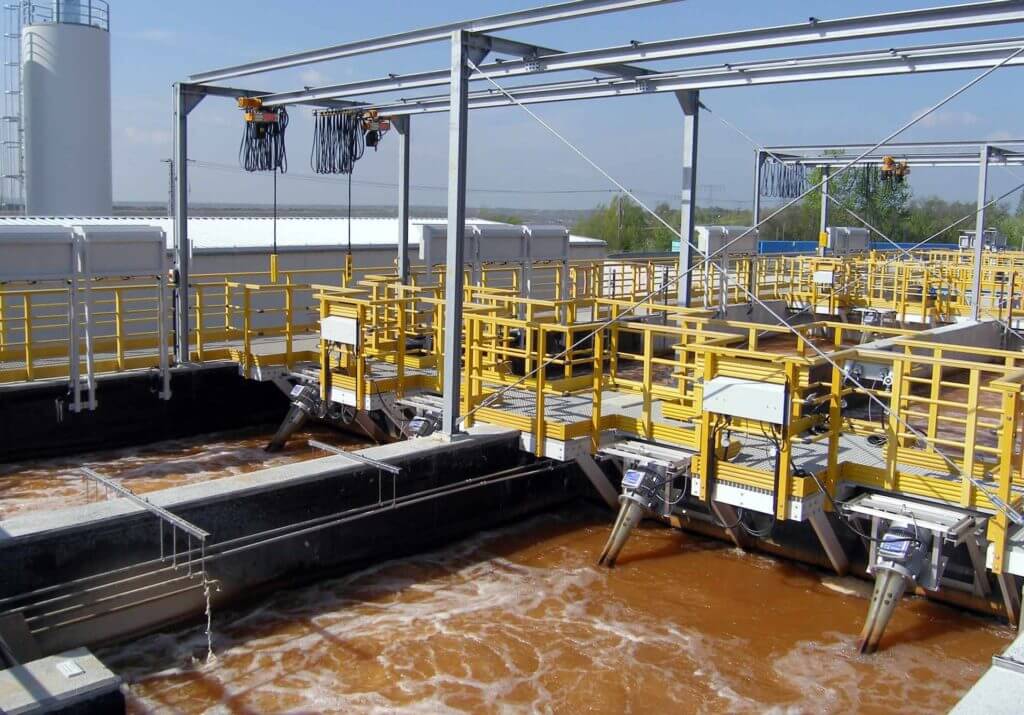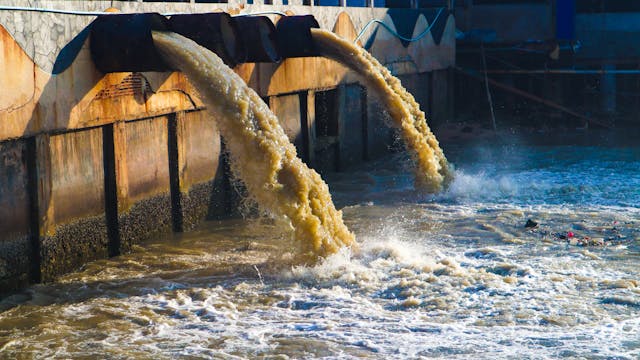Advancements and Breakthroughs in Hazardous Waste Water Treatment Technologies
The landscape of commercial wastewater treatment is undergoing a transformative change, driven by developments that boost both efficiency and sustainability. Arising innovations, such as membrane layer bioreactors and microbial fuel cells, are redefining impurity removal processes while adding to energy generation. Moreover, resource healing approaches are acquiring grip, aligning with circular economic situation principles. As governing criteria evolve, the combination of AI and artificial intelligence into wastewater monitoring systems assures to guarantee and enhance procedures compliance. The complete effects of these advancements raise crucial concerns about their scalability and long-term impact on industry practices.
Review of Drainage Therapy Technologies
Wastewater treatment technologies encompass a series of techniques developed to remove contaminants from commercial effluents before their release right into the atmosphere. These innovations are crucial for keeping eco-friendly balance and guaranteeing conformity with ecological policies. The primary groups of wastewater treatment consist of physical, chemical, and organic methods, each offering unique objectives based upon the nature of the contaminants existing.

Biological treatment techniques utilize microbes to degrade organic matter, making them especially efficient for organic-rich effluents. Strategies like turned on sludge and biofilm activators harness the all-natural degradation capabilities of bacteria, leading to considerable decreases in biochemical oxygen need (FIGURE)
Advanced Purification Strategies
Advanced filtration techniques represent a vital development in the world of industrial wastewater treatment, improving the effectiveness of pollutant removal processes. Industrial Waste Water Treatment. These methods encompass a variety of technologies, consisting of microfiltration, ultrafiltration, nanofiltration, and turn around osmosis, which give consecutive obstacles for different particle sizes and chemical structures
Microfiltration and ultrafiltration make use of membrane layer systems to eliminate suspended solids, bacteria, and larger natural particles, enhancing the high quality of effluent before more therapy. Nanofiltration connects the space between ultrafiltration and turn around osmosis, successfully eliminating divalent ions and organic compounds, thus reducing the lots on downstream procedures.
Reverse osmosis provides the highest degree of purification by allowing just water and little molecules to travel through its semi-permeable membrane layers, making it optimal for reclaiming high-quality water from commercial effluents. Recent advancements in membrane layer technology, consisting of the advancement of more fouling-resistant and resilient products, have actually significantly boosted operational performance and decreased prices.
Integrating these advanced filtering techniques not just enhances the general treatment process yet likewise adds to sustainability efforts by making it possible for water reuse and resource recuperation in industrial setups. (Industrial Waste Water Treatment)
Organic Treatment Technologies

Furthermore, the growth of engineered organic systems, such as membrane layer bioreactors (MBRs), combines organic treatment with innovative membrane filtration. This assimilation enables greater effluent high quality and reduced impact, making it suitable for space-constrained commercial facilities. Technologies in genetically engineered microbes have additionally emerged, boosting the biodegradation of particular impurities, such as pharmaceuticals and hefty metals, that are commonly challenging to get rid go to my blog of.
Additionally, the application of bioaugmentation strategies, where helpful microbes are presented to boost the existing biological therapy processes, has revealed promising cause boosting treatment performance. These technologies collectively represent a fad towards more efficient and sustainable organic therapy approaches that can adjust to the advancing complexities of industrial wastewater streams. As sectors remain to prioritize environmental conformity, these organic developments will certainly play a vital duty in wastewater monitoring.

Source Healing Methods
In commercial settings, the assimilation of resource recovery techniques has come to be progressively essential for improving sustainability and minimizing waste. These approaches concentrate on removing important products and energy from wastewater streams, consequently transforming prospective pollutants into multiple-use resources.
One noticeable method is vitamins and mineral recovery, where nitrogen and phosphorus, usually present over in wastewater, are recorded and important source exchanged plant foods. This not only minimizes environmental effects yet also supplies a round economy option for farming applications. Additionally, innovations such as anaerobic food digestion permit the conversion of organic waste right into biogas, a renewable resource source that can counter nonrenewable fuel source use in industrial operations.
Moreover, progressed filtration and membrane innovations promote the recovery of industrial spin-offs such as salts and steels. These recouped products can be rehabilitated into production processes, decreasing the requirement for virgin sources.
Future Fads in Drainage Monitoring
As sectors increasingly prioritize sustainability, the future of wastewater management is readied to undergo significant improvements. Technical improvements, such as synthetic intelligence and maker discovering, will certainly make it possible for a lot more reliable surveillance and administration of wastewater systems. These innovations can anticipate maintenance requirements, optimize treatment processes, and boost decision-making, inevitably lowering functional expenses and environmental impact.
Moreover, the integration of round economic situation principles will play an essential role in wastewater monitoring. Industries are anticipated to move towards systems that not just deal with wastewater however also recover beneficial sources, such as nutrients, water, and energy. This transition will certainly lessen waste and promote the reuse of products, lining up with worldwide sustainability goals.
Arising treatment strategies, such as membrane layer bioreactors and advanced oxidation procedures, will certainly further boost the efficiency of wastewater treatment, enabling higher quality effluents ideal for reuse. Furthermore, governing structures are likely to advance, highlighting more stringent requirements for wastewater discharge and encouraging markets to adopt cutting-edge treatment remedies.
Final Thought
In final thought, the development of commercial wastewater therapy technologies demonstrates a considerable change towards enhanced effectiveness and sustainability (Industrial Waste Water Treatment). Advancements in innovative filtration techniques, biological treatments, and resource healing techniques highlight the sector's commitment to environmental stewardship.
The landscape of industrial wastewater treatment is going through a transformative shift, driven by advancements that improve both effectiveness and sustainability.Wastewater treatment technologies encompass a range of methods developed to eliminate pollutants from commercial effluents prior to their release into the environment.Utilizing the power of click resources biological processes has led to significant innovations in the therapy of commercial wastewater.Furthermore, the application of bioaugmentation methods, where useful microorganisms are introduced to enhance the existing organic therapy processes, has revealed encouraging outcomes in enhancing treatment efficiency. These technologies jointly represent a trend in the direction of even more sustainable and efficient biological therapy techniques that can adapt to the developing complexities of commercial wastewater streams.
Comments on “Industrial Waste Water Treatment-- Enhance Performance with Custom Water Treatment Systems”